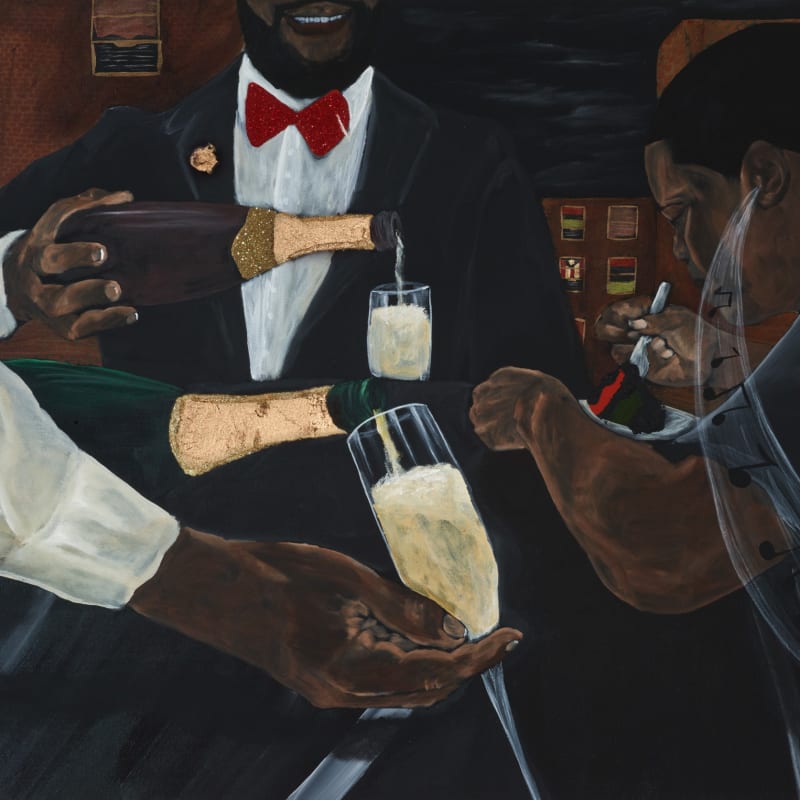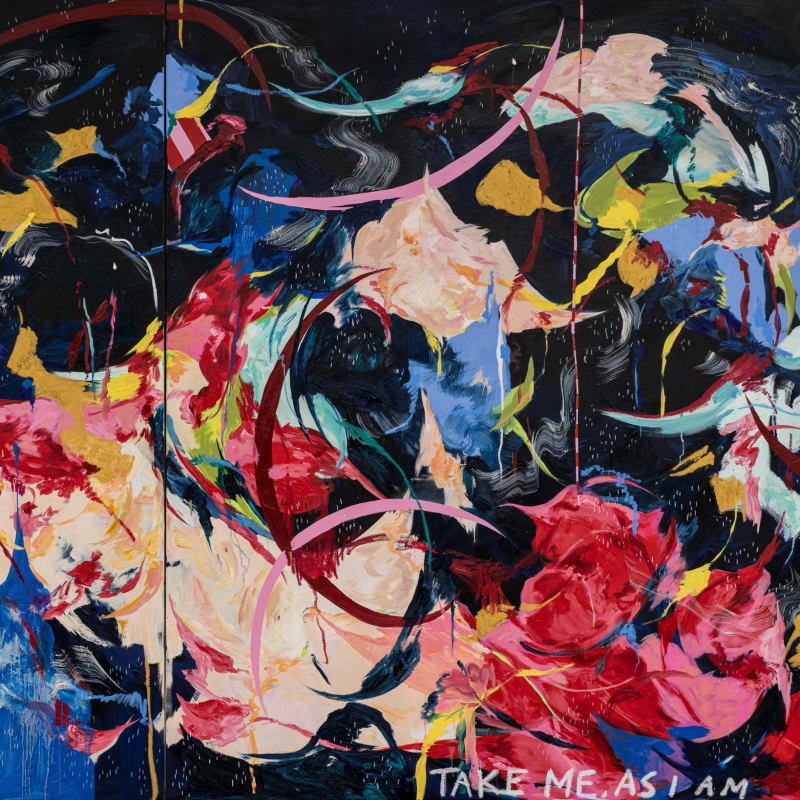For inquiries, please contact Director Savannah Downs:
For Art Basel Hong Kong 2024, Marianne Boesky Gallery is pleased to present new work by three painters: Jammie Holmes, Celeste Rapone, and Michaela Yearwood-Dan. Continuing the gallery’s long-standing commitment to championing artists throughout their careers, the Art Basel Hong Kong presentation reveals evocative points of connection and dialogue among these three artist’s formally inventive and politically nuanced practices.
In his intimate, intuitive paintings, Jammie Holmes (b. 1984, Thibodaux, LA) presents poignant scenes of Black families, communities, and traditions in the American South, drawing on memory to capture moments of celebration and struggle. Incorporating portraiture, symbolism, and written text into his work, Holmes intersperses reflections on social, cultural, and political concerns with deeply felt meditations on notions of family, home, and Blackness. There is a delicate balance between the personal and the political in Holmes’s oeuvre: He is a storyteller whose determination to imbue his work with his own subjective, lived experience is itself a subtle, effective political gesture.
Holmes’s work for Art Basel Hong Kong examines social classism in America. Deploying his signature motifs and symbols, Holmes infuses refined party scenes and portraits of imagined characters with distinct narratives. In one work, Holmes, dressed in a suit, peers at the viewer while playing the piano. A brick building—visible out the window behind the artist—is decorated with a host of flags, each reflecting the countries of origin of the tenants living there. The canvas is bordered with Holmes’s flag motif—which includes the Pan-African flag, David Hammons’s African American flag, and a flag of Holmes’s own devising. In another work, a group of elegantly dressed men pour flutes of champagne and eat slices of cake, the same brick apartment building visible out the window. Pulling at the social and cultural tensions Holmes has experienced throughout his own life, these paintings offer meditations on themes of home, friendship, and what it means to move among various social and economic strata.
Imbued with autobiographical details, art historical references, and the artifacts of daily life, the paintings of Celeste Rapone (b. 1985; New Jersey) embody the anxiety and longing inherent to the millennial condition. In uncannily flattened interiors—surrounded by the detritus of living—Rapone’s figures contort impossibly within their spaces; their limbs push against the frame, threatening to burst through the picture plane as Rapone tests the boundaries between figuration and abstraction. Rapone’s formalist concerns—surface, pattern, and color—are evident in the insistent flatness of her images, as spaces collapse and figures are pushed to the foreground, threatening to spill out toward the viewer. Frequently in the midst of action—working, reading, cooking—Rapone’s figures offer suggestions of narrative while emphasizing the very act of being observed.
Set in a suburban shopping center, Rapone’s newest body of work—the Mall Paintings—reflect the “mall-like" quality of the art fair atmosphere. Working from memories of a youth spent hanging out in shopping malls, Rapone infuses scenes of sunglasses kiosks, food courts, and massage chairs with a sense of ambiguous timelessness—the temporal distortion of bright, fluorescent lighting. Unlike many of her earlier works, many of the figures in these works meet the viewer with their gaze—the knowledge that they’re being observed reflected in their engaged expressions. With this suite of paintings, Rapone experiments with new, self-imposed limits—distinct, monochrome color palettes inspired by shopping mall memories and a contained, artificially lit interior—pushing her formal investigations of color and pattern to new heights.
Throughout paintings, works on paper, ceramics, and site-specific mural and sound installations, Michaela Yearwood-Dan (b. 1994; London, UK) endeavors to build spaces of queer community, abundance, and joy. Yearwood-Dan's singular visual language draws on a diverse range of influences, including Blackness, queerness, femininity, healing rituals, and carnival culture. Moving freely between media, Yearwood-Dan embeds botanical motifs and diaristic meditations within brushy abstract forms and heavy drips of paint. From the monumental scale of her paintings to the more intimate scale of her ceramics and works on paper, Yearwood-Dan's practice frequently reflects an inviting domesticity. Resisting any singular definition of identity, the artist explores the possibilities of creating spaces—physical, pastoral, metaphorical—that allow for unlimited and unbounded ways of being.
In her newest work, Yearwood-Dan continues her ongoing investigation into contemporary culture and millennial political concerns. Lush and brightly hued, the paintings are both personal and political, engaging with pop culture as well as notions of femininity, beauty, and joy. Language intertwines with botanical motifs throughout the paintings: abstract habitats teem with painted plant life, ceramic petals, and collaged patterns. Within the paintings, she inscribes lines of text—pulled from song lyrics, poetry, or her own lyrical writings. These meditations, appearing at various scales and degrees of legibility, are at once insightful and funny, confident, and questioning. Her words beckon the viewer into a vivid, welcoming world of paradox, play, and contemplation formed within an atmosphere of swirling forms and brilliant chromaticity.
Employing divergent techniques, imagery, and materiality throughout their practices, Holmes, Rapone, and Yearwood-Dan all expand on established conventions of painting, pushing at the limits of their medium to investigate the very possibilities of painting. The inventive and evocative works of these three artists—taken together—offer an optimistic look at the bright future of their shared medium.






